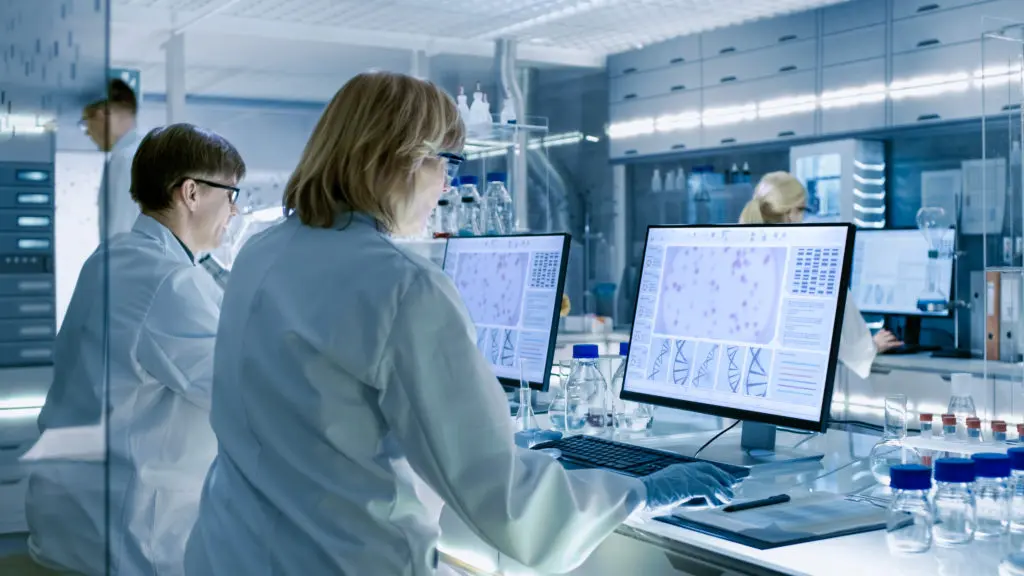How automation prevents human error in the laboratory
Despite protections, human error in labs still leads to incorrect diagnostics and exposure to infection. Here’s how automation can prevent these risks.

Why is human error a problem?
We are all capable of human error, no matter how well engaged, intentioned or experienced we are. Human error can occur in any setting, at home or in the workplace – whether you’re a patient who forgets their doctor’s appointment or a NASA scientist whose use of the wrong unit leads to the loss of a satellite. Diagnostic laboratory environments are no different.
Today, there are a range of protections to guard against human error in labs. Regulatory agencies use guidance and enforcement tools, while companies have policies, processes, and procedures. Drugs, treatments and devices are subject to robust regulation, giving patients confidence in their safety and efficacy. Lab technicians, scientists and clinicians also have to receive significant training and education to ensure they are qualified to carry out their complex roles.
“Human error was responsible for 43,000 false negative PCR coronavirus test results in September and October 2021”
Yet despite this, human error still occurs in laboratory environments. Recently, in a UK coronavirus testing lab, human error was reported to be potentially responsible for 43,000 false negative PCR coronavirus test results in September and October 2021. In one analysis of statistical data from US government agencies, human error was also thought to be responsible for 67% of incidents which led to potential exposures to dangerous pathogens, in Biosafety Level 3 labs.
Why is human error important to labs?
Human error can have wide-ranging consequences in all sectors and the potential human cost of mistakes in laboratory environments can have serious ramifications for patients. This is the case whether labs are discovering new treatments, manufacturing drugs or undertaking diagnostic tests. If you work in a laboratory, you will be fully aware that any mistakes can have serious and life changing consequences for patients and their families.
Human error in labs?
Human error is common in laboratory diagnostics, where lab scientists often perform highly-repetitive and laborious tasks in facilities that process thousands of samples a day.
In diagnostics labs, human error can lead to a number of avoidable issues, including:
- Contamination
- Reduced result quality
- Delays
- Failed tests
- Incorrect data
Eliminating manual processes is one of the most effective methods to improve quality laboratory diagnostics. By freeing humans from laborious tasks, and automating repetitive manual processes, we can remove human error and provide better patient outcomes.

How can automation help prevent human error in laboratory environments?
There are a number of ways that lab automation can help prevent human error, and ensure patients receive timely and high quality results.
1. Ensuring results of a reliably high quality
In diagnostic labs, it’s crucial that tests are accurate and precise. When tests are regularly incorrect, laboratory quality is impacted. Automation technology does not make mistakes. Automation is as accurate when it conducts the first process, as it does when it conducts its final. It can replicate and reproduce results, processes and instructions far more precisely, and swiftly, than human counterparts.
2. Reducing mistakes in data entry
When testing results are inputted manually, human error can lead to incorrect data, the consequences of which are sometimes only discovered when it’s far too late to fix. Lab automation software automatically inputs data into reports, reducing the number of errors in manual reporting.
3. Reducing wasted compounds
When humans make mistakes, expensive compounds and components can be wasted, and that’s before the time to clean up, fix and re-perform the process is considered. Full workflow automation can be carefully planned, tested and implemented to ensure valuable compounds aren’t unnecessarily wasted.
4. Reducing the number of failed tests
Human error can cause failed tests, whether it’s through contamination or incorrectly handling the sample. A high number of failed tests can mean constant re-testing, wasting valuable resources analysing failures and finding solutions. Automation can reduce failed test numbers thanks to its ability to repeatedly reproduce results precisely. With early diagnosis critical to patient care, automation can prevent patients experiencing unnecessary delays to their diagnosis.
5. Preventing errors arising from repetitive and laborious tasks or fatigue
Errors often happen in lab testing, because humans aren’t designed to conduct laborious and repetitive tasks, such as pipetting. Fatigue can also increase error rates in labs. Lab automation allows the same process to be replicated thousands of times, much faster than a human could do, and achieves the same high standard of accuracy and preciseness. Unlike humans, robots do not tire and, moreover, can operate for far longer periods of time than their human counterparts.
What is laboratory workflow automation?
Laboratory workflow automation solutions link multiple processes and workflows in order to automate entire assays in diagnostic testing. In the clinical lab, laboratory workflow automation normally encompasses both lab automation hardware and software to form an integrated system that charts the end-to-end progress of a sample. This solution will automate the processes of preanalytics, analytics and post-analytics.
A laboratory workflow automation solution in diagnostic testing may process, test and store specimens autonomously, with minimal human intervention.
With the laboratory workflow automation of diagnostics processes, human error is removed and the quality of lab results is significantly improved. You can find out more about laboratory workflow automation here.

